Key takeaways:
- A stop-loss order helps set a specific price to sell a cryptocurrency, preventing further losses and enhancing trading discipline.
- Common types include standard stop-loss, trailing stop-loss, and stop-limit orders, each offering different strategies for risk management.
- Regularly monitoring and adjusting stop-loss orders is crucial, as market conditions can change rapidly, impacting their effectiveness.
- Common mistakes include setting stop-loss orders too tightly and neglecting to adapt strategies based on market movements and portfolio context.
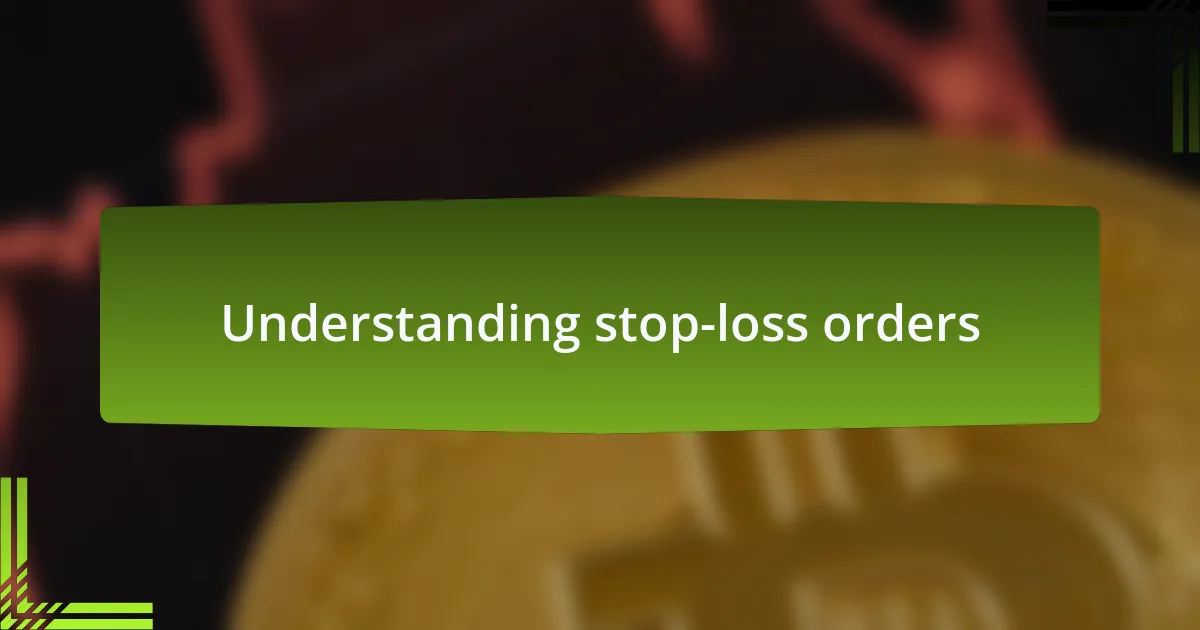
Understanding stop-loss orders
A stop-loss order is essentially a tool that allows you to set a specific price at which you want to sell a cryptocurrency to prevent further losses. I remember my early days in trading when I didn’t fully grasp this concept and watched my investment plummet. It was a painful lesson—one that taught me how crucial it is to have an exit strategy in place.
When considering stop-loss orders, it’s important to think about how quickly the crypto market can move. Have you ever found yourself frantically checking prices, only to realize you’ve missed an opportunity? I have! That’s why implementing a stop-loss order can offer peace of mind, allowing you to set parameters for your trades and focus on making informed decisions rather than reacting impulsively to market fluctuations.
Another aspect I find valuable is customizing your stop-loss orders based on market volatility. In my experience, placing a stop-loss too close can lead to premature selling during normal market fluctuations. It’s a balancing act—finding a sweet spot where you protect your capital while still giving your trades room to breathe. Have you ever faced the frustration of being stopped out too soon? It’s moments like these that emphasize the importance of striking that balance with your stop-loss strategies.
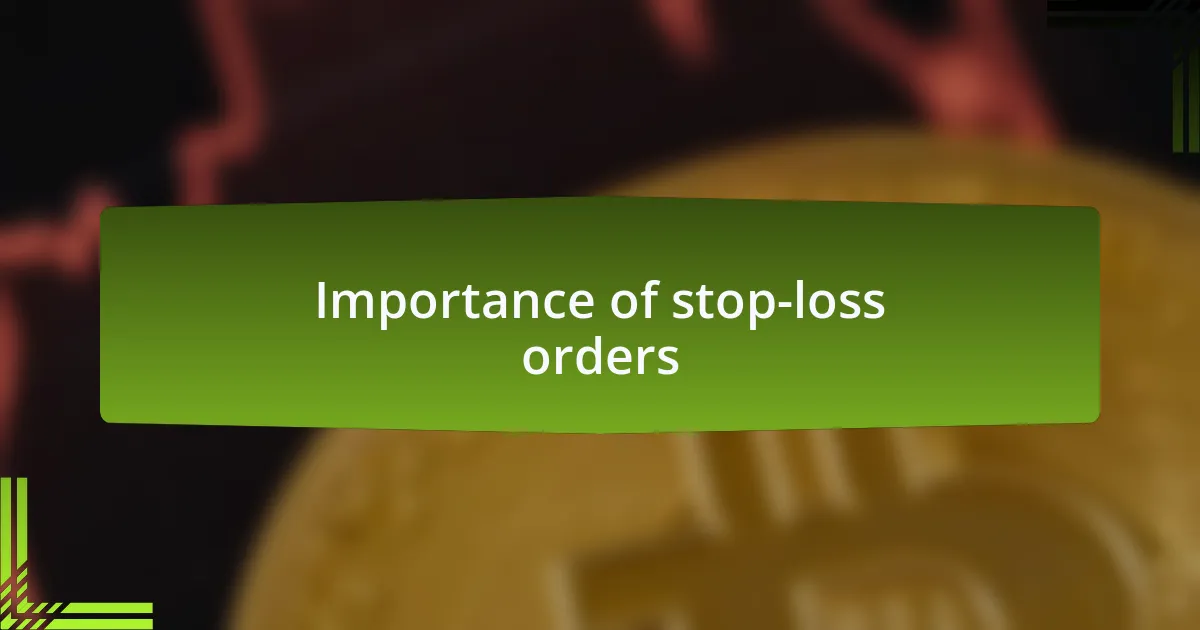
Importance of stop-loss orders
Using stop-loss orders isn’t just about minimizing losses; it’s a vital tool for managing risk. I once ignored this and watched a sudden market drop wipe out a significant portion of my investment. The feeling of helplessness in that moment was a stark reminder that protecting my capital should be a top priority, reinforcing the importance of having a stop-loss in place.
I often think about the psychological benefits of stop-loss orders. How much easier would trading be if we weren’t constantly stressed about potential losses? I remember implementing stop-losses on certain trades and feeling a weight lifted off my shoulders, as if I had finally gained some control over my trading strategy. It allows for a more rational approach, helping countless traders like myself stick to their plans without getting swept away by fear and impulse.
Moreover, stop-loss orders serve as an essential part of a disciplined trading strategy. I’ve learned firsthand that emotions can lead to hasty decisions that negatively impact performance. By setting a stop-loss, I can walk away from my screen, knowing that my plan is in place to safeguard my investments, allowing me to focus on the bigger picture instead of getting caught up in everyday price movements. What has your experience been with risk management in trading?
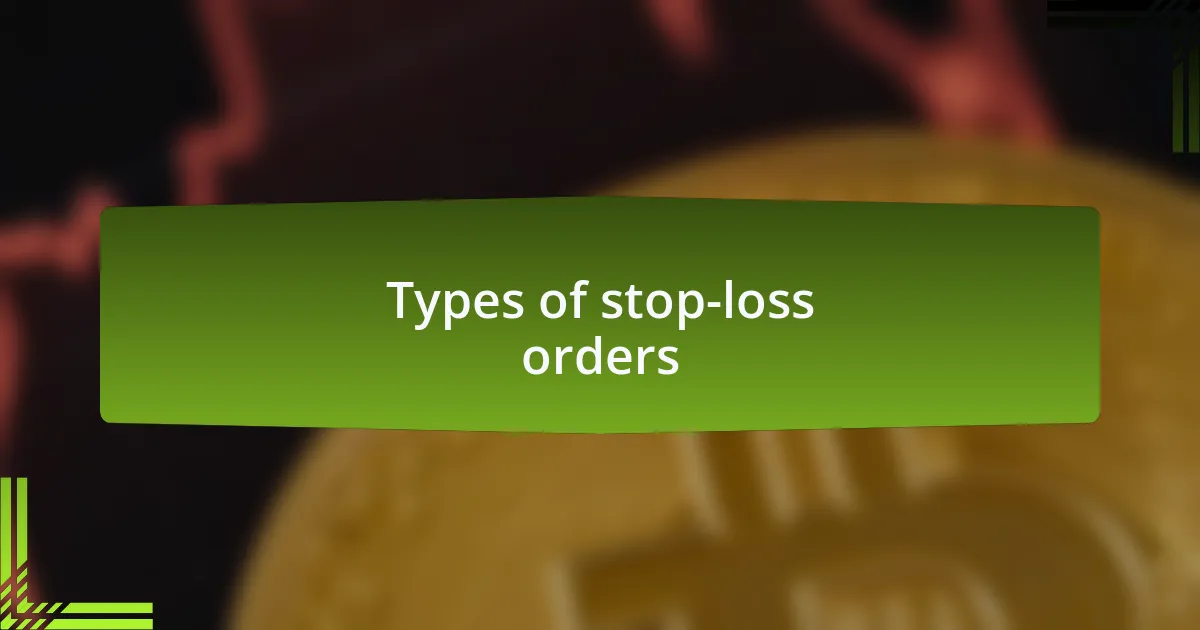
Types of stop-loss orders
There are a few main types of stop-loss orders that every trader should be familiar with. The most common one is the standard stop-loss order, which automatically sells your asset once it reaches a predetermined price point. I remember placing my first one and feeling a mix of anxiety and relief. It was as if I had taken a proactive step to protect my investment, rather than waiting helplessly for the market to dictate my fate.
Another type is the trailing stop-loss order, which adjusts as the price of the asset moves in your favor. Essentially, it locks in profits while still providing an exit strategy if the market turns against you. I’ve found this type especially useful during bullish trends, as it gives me the flexibility to ride the wave while still feeling secure. Have you tried one of these? The freedom it provides can be empowering.
Lastly, the stop-limit order allows for a bit more control since it combines elements of both stop-loss and limit orders. It sets a stop price, at which the order becomes a limit order. This means you specify the minimum price you’re willing to accept when the order is triggered. I remember cautious yet excitedly trying this method during a volatile market. It was a learning experience that reinforced for me the importance of knowing exactly how much I was ready to risk. How do you approach your stop-loss strategies?
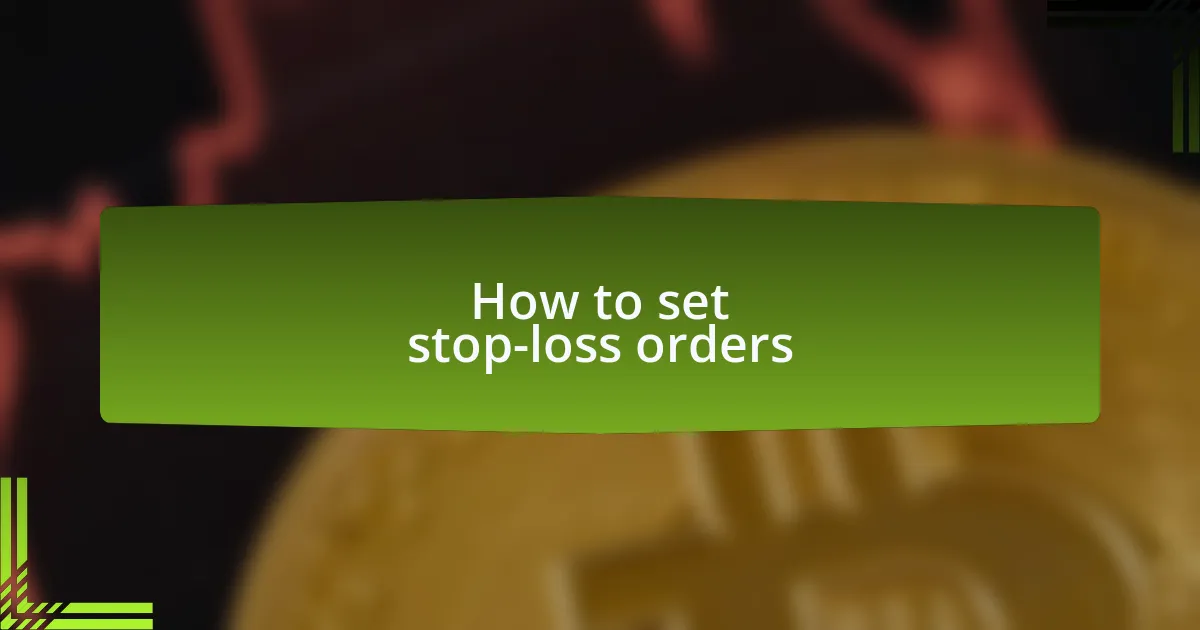
How to set stop-loss orders
When it comes to setting stop-loss orders, the first step is determining the price at which you’d like to exit a trade. This price should reflect your risk tolerance and market conditions. I vividly recall my early days trading when I hesitated to choose the right level; it felt daunting. How could I balance potential losses while giving my trades room to breathe?
Once you’ve identified your exit point, it’s time to place the actual order. Most platforms have a straightforward interface for this, where you simply fill in the stop price. I still remember the moment I hit “submit” for my first stop-loss order. It was a leap of faith, but once I saw it working as intended during market dips, I felt a sense of empowerment. Isn’t it reassuring to know your investments have a safety net?
Lastly, keep in mind the importance of monitoring your stop-loss orders regularly. Markets are dynamic, and what works one day might not hold the next. Just last month, I adjusted a stop-loss order after a significant market shift, which saved me from potential losses. Engaging with your trades this way isn’t just about setting orders; it’s about staying informed and active as a trader. How often do you revisit your stop-loss strategies?
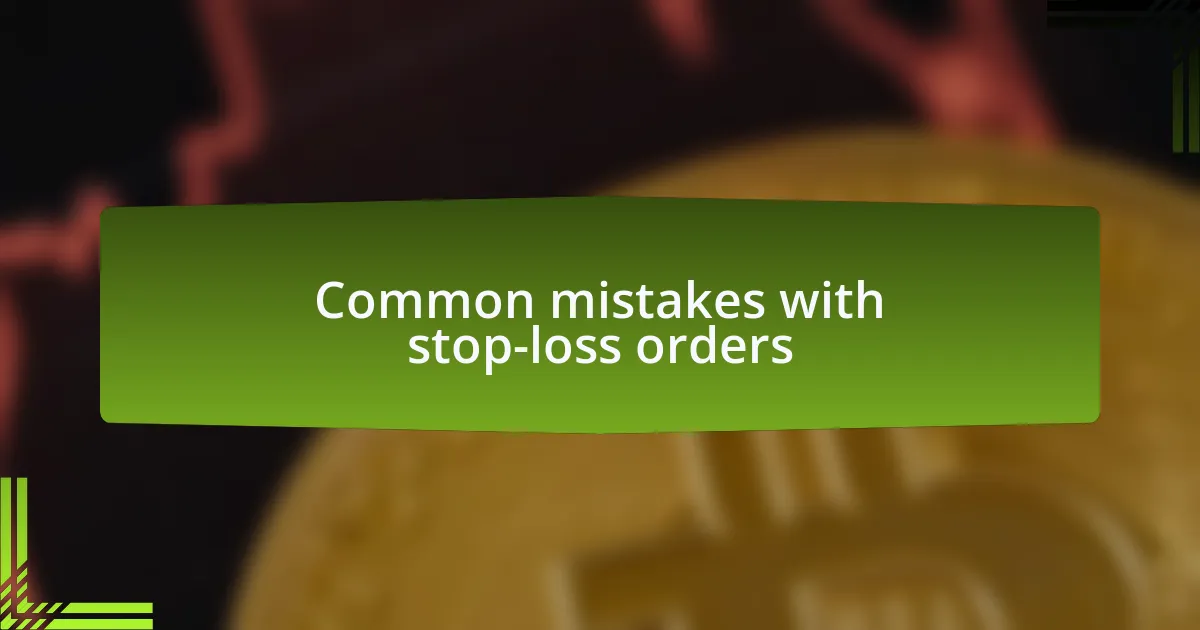
Common mistakes with stop-loss orders
Many traders mistakenly set their stop-loss orders too tight, fearing losses so much that they get knocked out of potentially profitable trades. I remember a time when I set a stop-loss just a few percentage points below my entry price, only to be spooked by the market’s natural volatility. It left me wondering: was my fear of loss costing me more than I anticipated?
Another common pitfall is neglecting to adapt the stop-loss strategy as market conditions change. I learned this the hard way when I stubbornly stuck to my initial stop-loss level during a market rally, only to miss out on a substantial upward movement. It made me realize the importance of flexibility in trading. What’s the use of a safety net if it’s not adjusted when the tightrope gets wobbly?
Lastly, some traders forget to consider overall portfolio context when placing stop-loss orders. I once isolated a single trade without regard to how it fit into my larger strategy, which led to overexposure and heightened anxiety. Balancing individual risk with the bigger picture is crucial; otherwise, you risk falling into an emotional pit that distorts your decision-making. Have you ever found yourself in a similar situation?
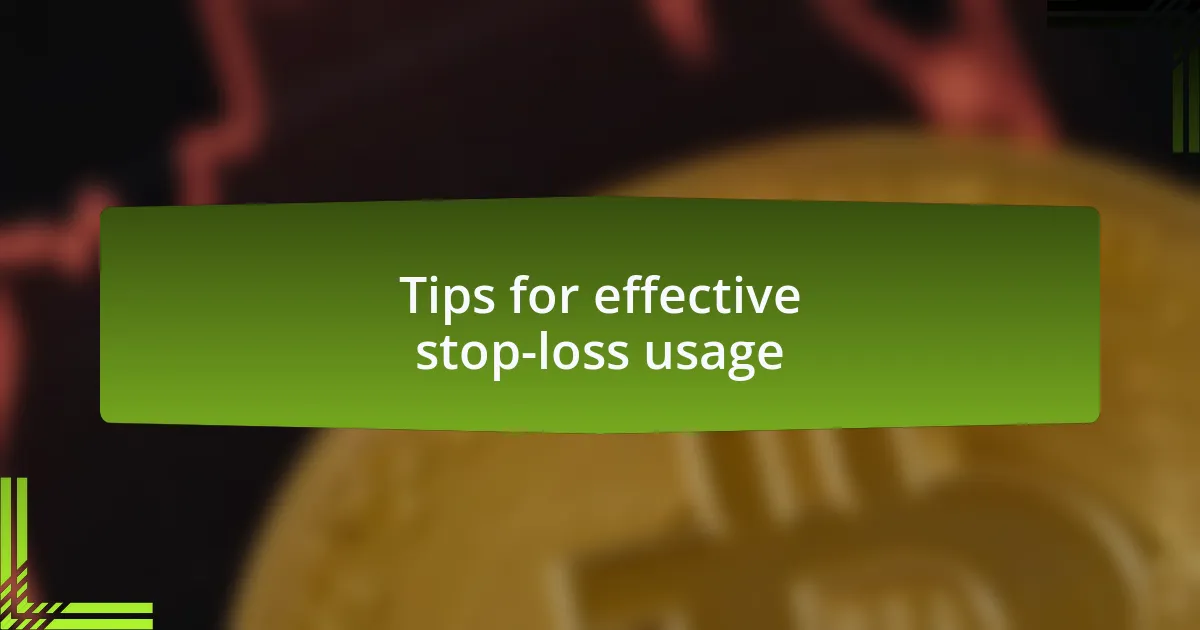
Tips for effective stop-loss usage
Understanding the right placement of your stop-loss is paramount for effective usage. I’ve often found that placing it just below key support levels can enhance your trade’s longevity. For example, during a recent trade on a popular altcoin, I noticed how support levels acted like a buffer, keeping my position safe while minimizing unnecessary triggers from everyday market fluctuations. Have you ever thought about how support and resistance can impact your stop-loss strategy?
Moreover, it’s essential to review and adjust your stop-loss orders regularly as market conditions fluctuate. I recall a specific instance when the market experienced unexpected volatility; adjusting my stop-loss in real-time not only safeguarded my capital but also allowed me to ride out a potential market rebound. This flexibility can transform a potentially losing trade into a profitable one. Isn’t it fascinating how adapting to the moment can change your entire trading narrative?
Lastly, understanding your emotional response to trades can greatly influence how you utilize stop-loss orders. I’ve been in situations where fear clouded my judgment, leading me to exit a position prematurely. Reflecting on this, I realized that cultivating a disciplined mindset, with predetermined stop-loss levels based on analysis rather than emotion, is vital. How do you manage your emotions when navigating the highs and lows of the crypto market?